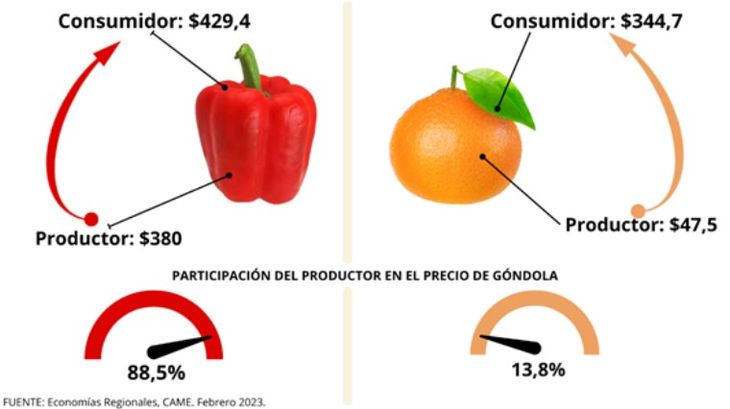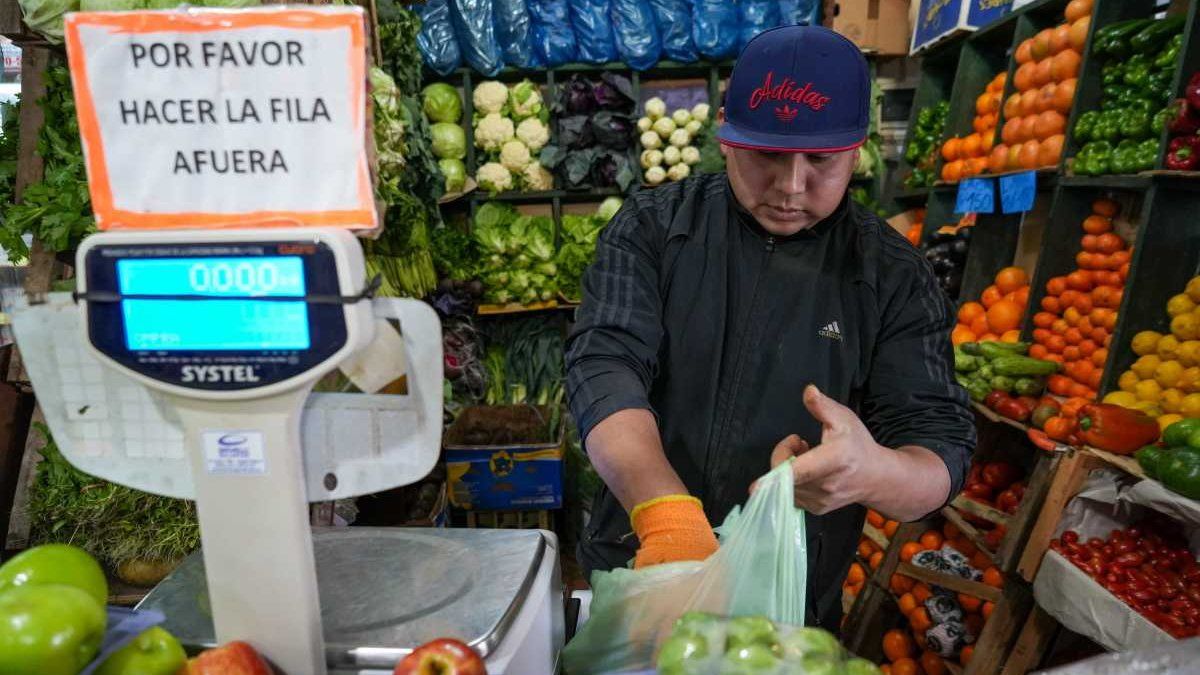The new report of the Argentine Confederation of Medium Enterprises (CAME) in relation to regional economies, it came with a warning. Combining drought With the heat wave and some late frosts in harvesting areas, production was damaged and they warn of the impact on the gondola.
FOOD
NA
Drought: how it will impact food prices
The high temperatures burned green leafy vegetables and damaged fruits, causing a sharp drop in supply and a jump in origin prices. The drop in purchasing power limited these costs from being fully transferred to the gondola. According to the Origin and Destination Price Index (IPOD), in February the prices of agri-food increased 3.1 times from the field (origin) to the shelf (destination). That is, consumers paid $3.1 for every $1 that producers received.
On average, the participation of the producer explained 33.6% of the final sale prices. The greatest participation was held by the producers of pepper (88.5%), due to the high temperatures that burned green leafy vegetables and caused a jump in the prices of origin, while the lowest was for those of tangerine (13.8%).
The fall in the purchasing power of consumers has also limited maintaining and/or raising the shelf prices of several of the products that make up the IPOD basket.
came3.jpg

Products with larger price gaps
The tangerine (7.2 times), the Red Apple (6,4), the lemon (5,7), the garlic (5,3) and the chard (5.1), were the 5 products that presented the greatest difference between the prices of origin and destination.
The tangerine it was the product with the greatest gap between the producer and the consumer. Prices only registered variations at one end of the chain: the consumer. While there was no increase in origin, this citrus had a monthly increase in shelves of 34%.
The heat causes irreversible damage to the fruits, so the combination of drought and high temperatures in producing areas (Entre Ríos) has caused a sharp drop in supply.
On the other hand, the prices of lemona citrus fruit that has also suffered the ravages of inclement weather, registered a rise of 17.1% in producer prices and 11% for consumers.
Another of the fruits that presented a great difference in prices from the field to the gondola, was the Red Apple, with a monthly increase of 41% at origin -new harvest season and pricing for 2023- and a decrease of 9% at destination.
Regarding vegetables, the garlic registered a 14.3% drop in producer prices -high supply in February and March- and did not show variations on shelves, while the price of chard it increased 6% at origin and 43% at destination, due to recurring droughts and high temperatures that burned green leafy vegetables, especially in the green belts of La Plata and Santa Fe.
Products with smaller gaps
Among the products that presented the smallest difference between the price received by the producer and the one paid by the consumer, there are 2 products of animal origin and 3 horticultural products.
In the case of pepper (1.1 times), product with the lowest gap of the month, while producer prices increased by 70.1%, consumer prices fell by 24%.
The prices of the lettuce (1,4) and the broccoli (1.9), for their part, registered an increase at origin of 93.5% and 76.1%, respectively -due to high temperatures that burned green leafy vegetables-, while at destination they decreased 2.5% in the first case, and increased 12.5% in the second.
Regarding the low field-shelf gap of livestock products and by-products, the eggs (2) and the chicken (1,6), in general, have integrated production systems, which means that all the actors in their respective value chains are part of the business risk.
While eggs increased 30.4% at origin and 16.5% at destination, chicken prices rose 48.3% for producers and 7.5% for consumers. Effect of the advance of bird flu in the region, prices began to skyrocket before their arrival in the country. At this time, and after effectively affecting local poultry farming, Producers are concerned about a possible production crisis that could occur if the disease is not controlled.
Source: Ambito




